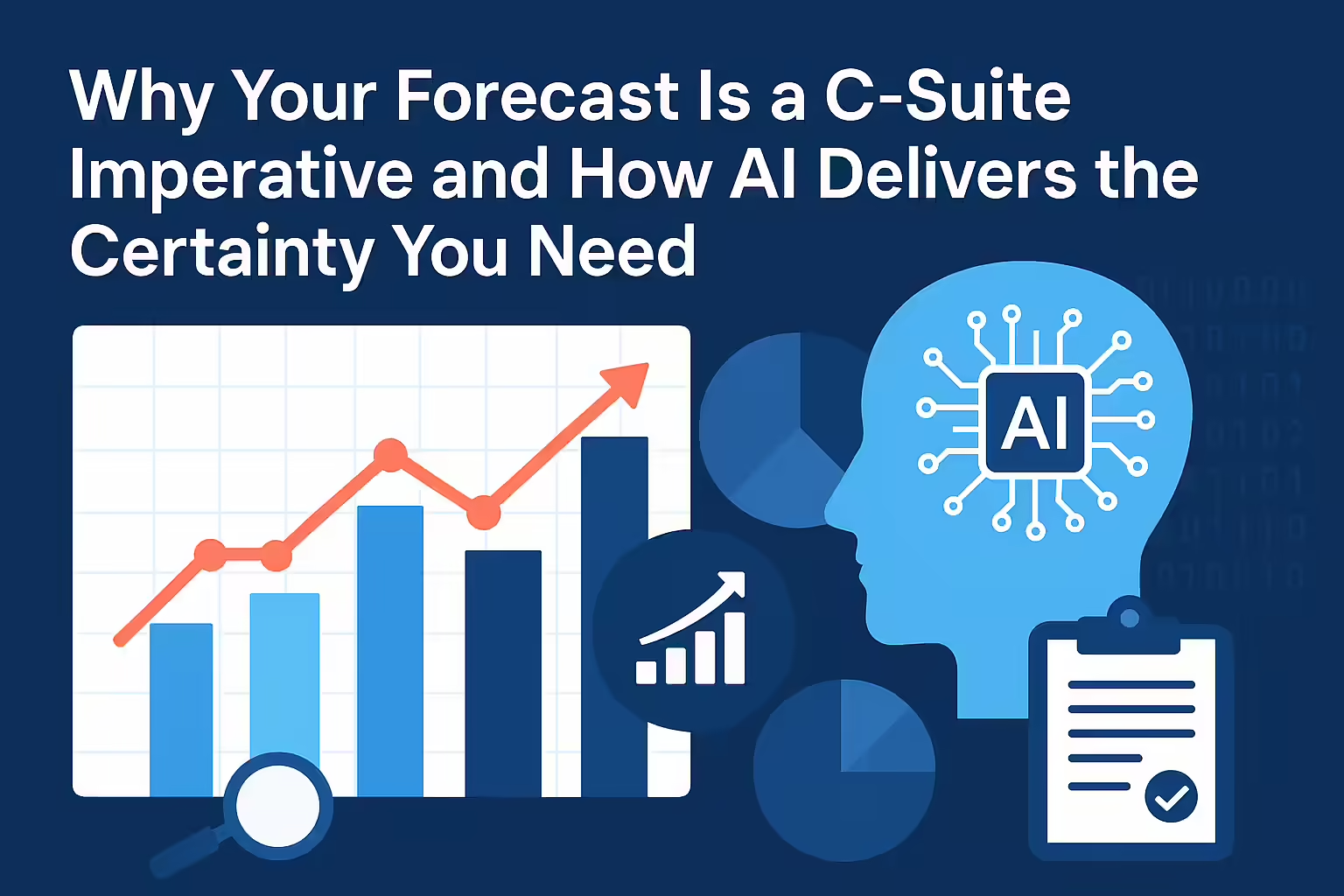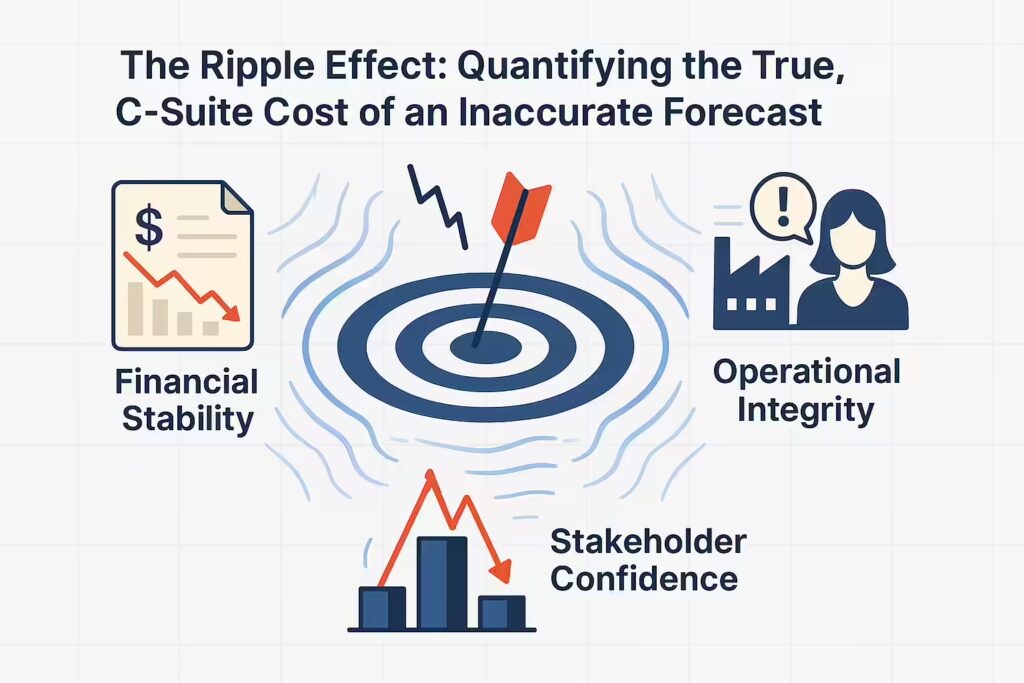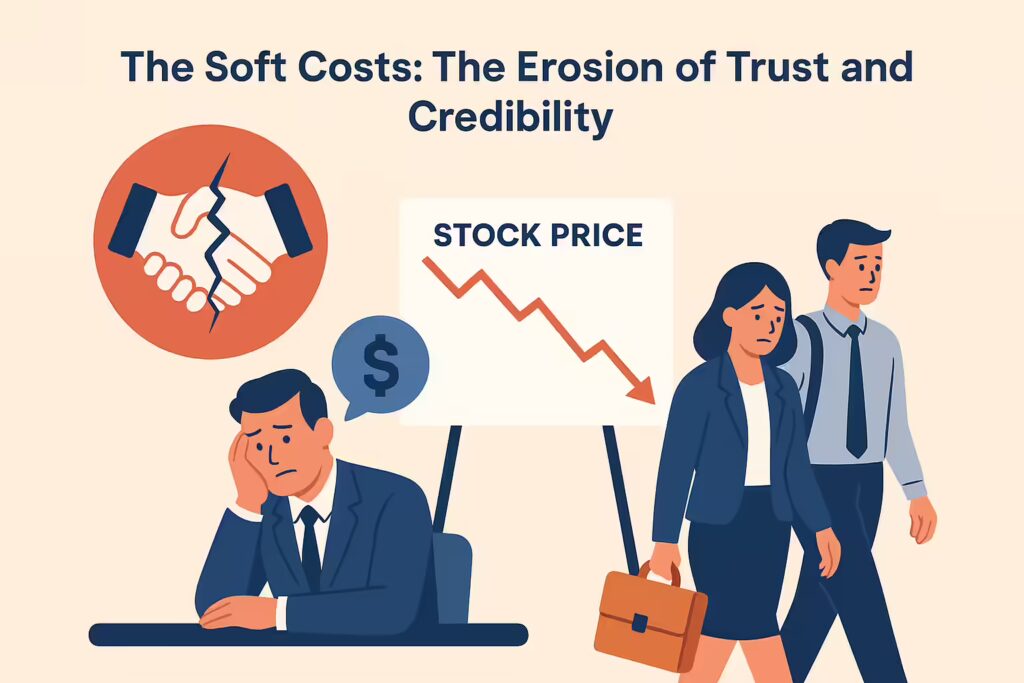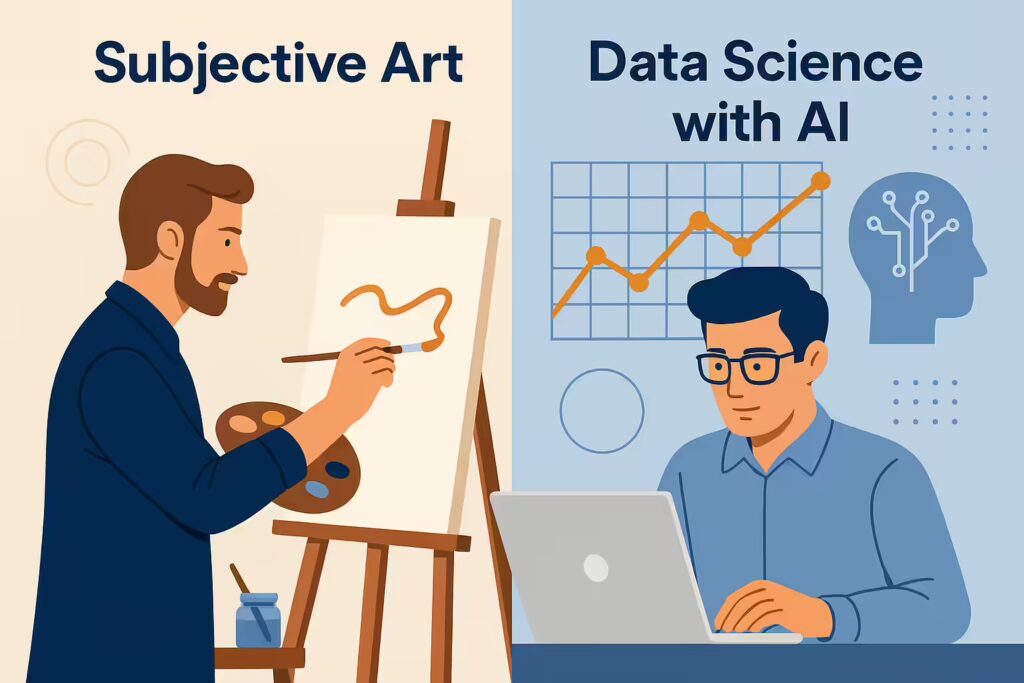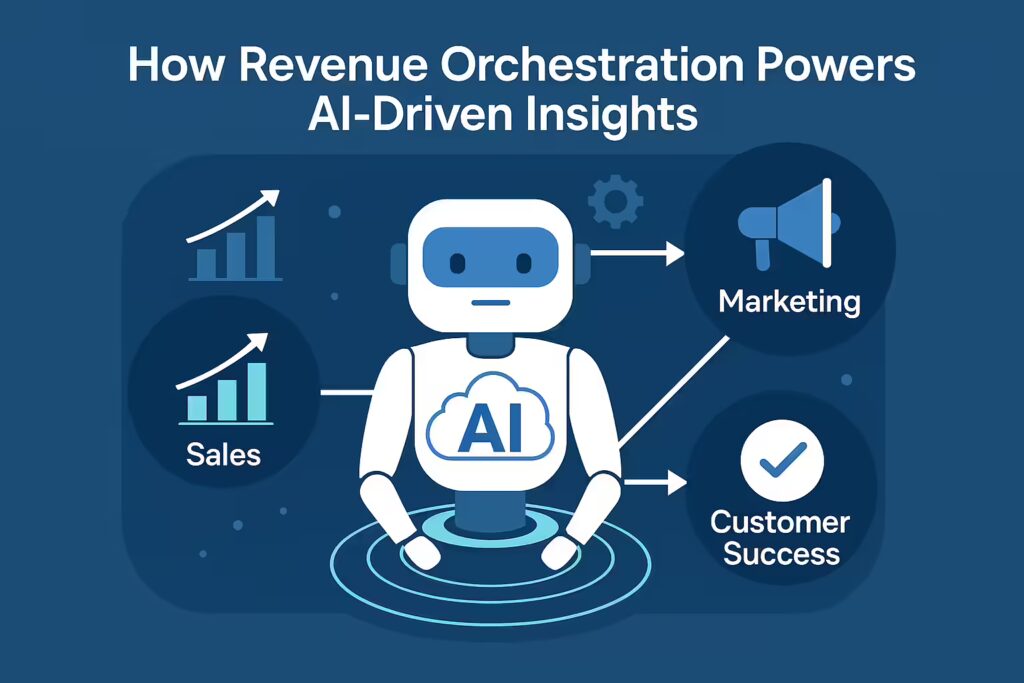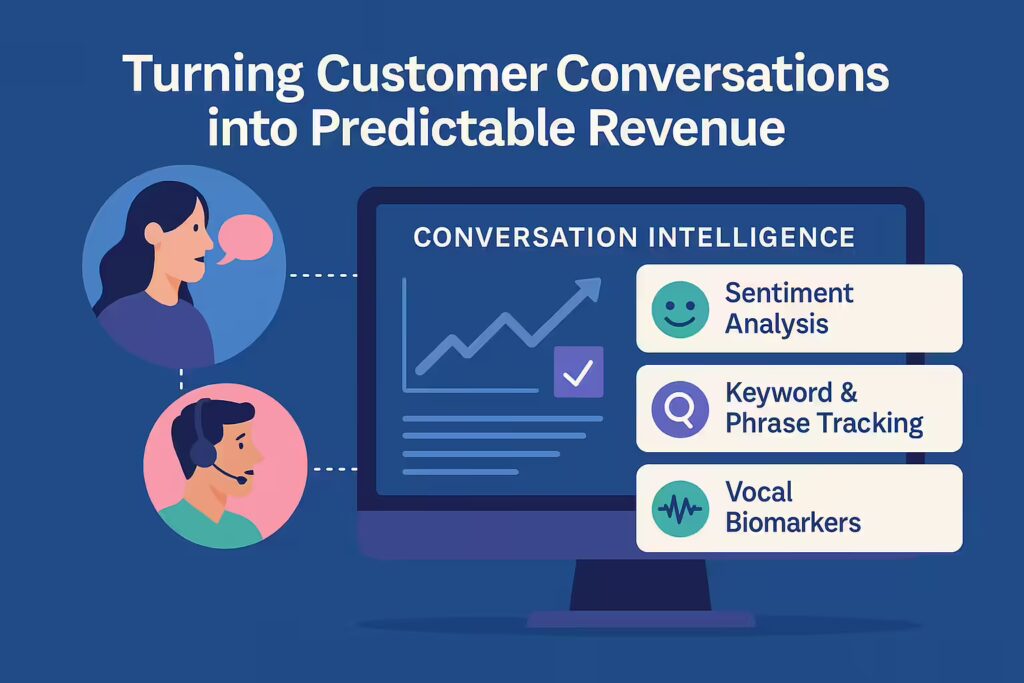The Forecast Is the Pulse of Your Business
The ability to accurately forecast revenue is the “ultimate number that sets great sales leaders apart”. It serves as the central nervous system of an organization, a real-time indicator of its operational health and strategic viability. Yet, for most businesses, this critical function operates with a dangerous level of imprecision. A staggering 93% of sales leaders are unable to accurately forecast revenue within a 5% margin, even when only two weeks remain in the quarter. This is not a minor statistical variance; it is a critical vulnerability at the heart of the enterprise. In an increasingly complex and volatile economic landscape, this challenge is intensifying. According to Gartner, 67% of sales operations leaders report that creating accurate sales forecasts is more difficult today than it was just three years ago. The consequences of this uncertainty ripple through every facet of the business, directly influencing budget planning, cash flow management, resource allocation, and risk mitigation. Strategic decisions on hiring, marketing spend, and inventory are all predicated on a number that is, all too often, a product of guesswork. Despite the explosion of data available to modern enterprises, many organizations continue to build their strategic plans on a foundation of gut-feel, subjective sales representative input, and fragmented CRM data. This reliance on outdated and unreliable methods constitutes a profound and, now, entirely unnecessary business risk. The era of treating forecasting as a subjective art form is over. True, predictable revenue forecasting has evolved into a data science. This transformation is made possible by the power of Artificial Intelligence (AI) to analyze the single most honest and predictive data source available: the unfiltered voice of the customer, captured and contextualized within every direct conversation.The Ripple Effect: Quantifying the True, C-Suite Cost of an Inaccurate Forecast
The damage from an inaccurate forecast is not confined to the sales department. Its shockwaves are felt across the entire organization, impacting financial stability, operational integrity, and stakeholder confidence. The core issue is not merely coming in under budget; over-forecasting is an equally corrosive problem. The fundamental danger lies in unpredictability itself, which paralyzes strategic decision-making and introduces systemic risk.The Hard Costs of Coming Up Short (Under-Forecasting)
When revenue comes in below the forecast, the financial and operational consequences are immediate and severe.- Direct Financial Impact: A revenue miss translates directly into a decrease in stock price and overall company valuation. It triggers immediate cash flow crises, forcing leadership to slam the brakes on hiring, cut programs, and delay critical investments required for future growth.
- Painful Operational Decisions: To achieve what is often termed “instant cash relief,” companies may be forced into layoffs. This action, while providing a short-term financial fix, devastates employee morale, erodes institutional knowledge, and incurs significant, costly rehiring and retraining expenses in the future.
- Weakened Capital Position: A company’s ability to raise capital is fundamentally tied to its predictability. An inaccurate forecast severely weakens the fundraising narrative, potentially leading to a missed or delayed fundraise, a shorter operational runway, or a smaller capital injection on less favorable terms.
The Hidden Costs of Over-Performance (Over-Forecasting)
Exceeding the forecast may seem like a positive outcome, but it is a clear symptom of the same underlying disease: a lack of visibility and control. The costs are just as real.- Missed Growth Opportunities: Without an accurate picture of surging demand, leaders cannot proactively accelerate hiring or strategic investments to capitalize on market momentum and press their advantage. The opportunity to pull forward growth is lost.
- Supply Chain and Operational Chaos: Inventory levels, purchased based on a lower forecast, are quickly proven insufficient to meet actual demand. This leads to a cascade of operational failures: stock-outs, unfilled orders, costly expediting fees, and ultimately, damaged customer satisfaction. This creates a “downstream crush” on post-sales, implementation, and customer support departments, which are suddenly under-resourced to handle the unexpected volume, leading to employee burnout and high turnover.
- Wasteful Spending: Due to accounting rules, unexpected revenue may need to be spent hastily before a fiscal period closes. This often results in inefficient, poorly vetted investment decisions and wasted capital as departments scramble to allocate their windfall budget.
The Soft Costs: The Erosion of Trust and Credibility
Beyond the immediate balance sheet impact, forecast inaccuracy inflicts deep, lasting damage on an organization’s most valuable intangible assets: trust and credibility. While termed “soft” costs, their financial consequences are concrete and severe. A loss of investor confidence directly impacts stock multiples and the cost of capital, while low morale leads to high turnover, incurring very real recruitment and training expenses. These are not separate categories but an interconnected system where reputational damage inevitably materializes on the P&L statement.- Stakeholder Confidence: Both under- and over-forecasting erode investor and board confidence. Stakeholders begin to question whether leadership has a true pulse on the business, viewing the organization as reactive rather than strategic. This skepticism can negatively impact the company’s autonomy and future fundraising ability.
- Executive Credibility: The C-suite’s credibility, both internally and externally, comes under fire. The crucial relationship between the Chief Revenue Officer (CRO) and Chief Financial Officer (CFO) can become strained. The board, investors, and even customers lose trust in leaders who cannot accurately articulate the state of their own business.
- Internal Morale and Talent Drain: For the sales team and the entire organization, constantly missing targets is demoralizing. It leads to a perceptible drop in morale, decreased productivity, and ultimately, higher employee turnover as top performers leave for more stable and predictable environments.
| Consequence | Impact of Under-Forecasting (Coming in Low) | Impact of Over-Forecasting (Coming in High) |
|---|---|---|
| Financial Stability | Decreased stock price, cash flow crisis, weakened ability to raise capital. | Inefficient late-period spending, missed opportunities to accelerate investment. |
| Operational Efficiency | Painful layoffs, reduced program investment, damage to long-term growth potential. | Inventory stock-outs, expediting fees, downstream crush on support teams, customer dissatisfaction. |
| Strategic Agility | Reactive, crisis-driven decision-making; inability to fund strategic initiatives. | Inability to capitalize on market momentum; under-resourced teams unable to meet demand. |
| Stakeholder Trust | Erosion of investor and board confidence; questions about leadership’s control over the business. | Erosion of investor and board confidence; questions about leadership’s visibility into the business. |
| Team Morale & Culture | Low morale, especially in sales; increased employee turnover and loss of institutional knowledge. | Burnout in post-sales departments; deterioration of CRO/CFO trust; premature quota increases. |
The Cracks in the Foundation: Why Traditional Forecasting Is Built on Sand
The persistent failure of traditional forecasting methods is not due to a lack of effort, but to a fundamental flaw in their architecture. They are built upon a foundation of subjective, fragmented, and lagging data that is inherently unreliable for predicting future outcomes.The Illusion of CRM Data: Garbage In, Garbage Out
The primary data source for most forecasts is the Customer Relationship Management (CRM) system. However, the data within it is fundamentally compromised.- Subjectivity and Bias: The data is almost entirely based on rep-driven, subjective inputs. A rep’s update of a deal stage is not an objective event; it is an interpretation colored by personal bias. This subjectivity is plagued by two opposing forces: over-optimism to project confidence to management, and “sandbagging” (intentional underestimation) to make quotas easier to achieve. Sales managers then attempt to correct for this by applying their own “manager math,” adding another layer of guesswork to the process.
- Inaccurate and Incomplete Data: Beyond bias, the data is often simply fragmented, incomplete, or inaccurate due to inconsistent data entry practices. Critically, pipeline stages are typically defined by the seller’s actions (e.g., “Proposal Sent,” “Demo Completed”) rather than objective, verifiable actions taken by the buyer. This makes deal stages an unreliable indicator of true progress and commitment.
Process Fragmentation and Data Silos
Even if CRM data were perfect, it would still be incomplete. Revenue-critical information is scattered across a multitude of disconnected systems: the CRM, marketing automation platforms, helpdesk software, and financial tools. This siloing prevents a holistic, 360-degree view of the customer and introduces significant blind spots into the forecast. A deal might appear healthy in the sales pipeline, but the account could simultaneously have a dozen unresolved high-priority support tickets or have completely disengaged from all marketing communications. These are critical risk factors that are entirely invisible to a forecast based solely on sales data.Inability to Adapt to Dynamic Markets
The modern B2B buying journey is no longer a linear, predictable process. Buyers now complete a significant portion of their research and evaluation independently before ever engaging a salesperson, rendering traditional sales cycle assumptions obsolete. Traditional forecasting models, which rely heavily on historical data and simple linear trends, fail spectacularly when faced with volatile market conditions, rapid shifts in customer preferences, and new competitive pressures. They are designed for a stable world that no longer exists. The core problem with traditional forecasting is not the statistical model being used; it is the source of truth. The entire process relies on the seller’s perception of a deal’s health, which is an unreliable and lagging proxy for the buyer’s actual intent. A rep updates a deal stage in the CRM based on their interpretation of a conversation, filtered through their own quota pressure and personal biases. The forecast is then built upon this subjective, second-hand data. The system is measuring the seller’s sentiment, not the buyer’s reality. This points to a deeper, structural flaw: a fundamental misalignment of incentives. A sales representative’s primary compensation is tied to closing deals, not to the accuracy of their quarterly forecast. An optimistic forecast might secure more resources, while a pessimistic one (sandbagging) can lower future quotas. The company’s goal, however, is a brutally honest and precise forecast to plan resource allocation and report to investors. These two objectives are in direct conflict. Therefore, any forecasting system that relies solely on rep-provided data is built on an inherent conflict of interest, guaranteeing a degree of inaccuracy.The New Paradigm: From Subjective Art to Data Science with AI
Artificial Intelligence resolves the fundamental flaws of traditional forecasting by shifting the foundation from subjective opinion to objective, comprehensive data. It transforms the process from a speculative art into a rigorous science, delivering a level of accuracy and predictability that was previously unattainable.Establishing a New Foundation: A Single Source of Truth
The first step in building a reliable forecast is to break down the information silos that cripple traditional methods. AI-powered platforms can ingest, integrate, and clean massive, fragmented datasets from across the entire revenue function—including CRM records, call recordings, text messages, emails, and even support tickets. By creating a unified view of every customer interaction, AI establishes a “single source of truth” for all revenue-related data, ensuring that every department is working from the same complete and accurate information.Detecting Reality in Real-Time
With a comprehensive dataset in place, AI can begin its analysis. It excels at identifying complex patterns, trends, and correlations in data that are completely invisible to the human eye. It moves beyond static, seller-defined deal stages to analyze real-time signals of deal health and momentum. For example, an AI model can analyze the sentiment within customer conversations to gauge emotional responses to pricing discussions, track the frequency of competitor name mentions, or flag a sudden decrease in communication as a critical risk factor—all without any manual input from a sales rep.Eliminating Human Bias and Subjectivity
By grounding its analysis in objective, activity-based data rather than subjective human judgment, AI systematically removes the optimism and sandbagging biases that plague manual forecasts. The forecast is no longer an opinion; it becomes a data-driven, practical, and reliable prediction of future outcomes.Adaptive and Predictive Power
Unlike static models, machine learning algorithms are not a one-time calculation. They learn and adapt over time, continuously refining their predictions as new data from every sales call and customer interaction is fed back into the system. This allows the forecast to adjust to changing market conditions and evolving customer behavior in real time. The results of this approach are transformative. Studies show that companies using machine learning-based forecasting report an average accuracy of 88%, compared to just 64% for those relying on traditional spreadsheets. Advanced platforms like Kixie, which leverage a rich, multi-channel dataset, report the ability to achieve up to 96% forecast accuracy. This technological shift does more than just improve a number on a report; it fundamentally changes the role of the sales leader. In the traditional model, a sales manager spends the bulk of their pipeline review meetings acting as a “data interrogator,” grilling reps with questions like, “How do you know?” and “Why do you believe that?” in a manual attempt to de-bias the rep’s subjective input. With an AI-driven forecast, the data itself provides the objective assessment of deal health. The AI can flag a deal as at-risk because negative sentiment was detected in the last call when integration was discussed. The conversation between manager and rep is elevated. It shifts from “Is this deal real?” to “This deal is at risk because the customer is concerned about our API. Let’s strategize on how to bring in a solutions engineer to address that.” This transition elevates the manager from a pipeline inspector to a true strategic coach, focusing their valuable time on enablement and strategy, not tedious data validation.| Forecasting Aspect | Traditional Method (The Old Way) | AI-Powered Method (The New Way) |
|---|---|---|
| Primary Data Source | Subjective rep input in CRM. | Objective, multi-channel activity data (calls, emails, meetings). |
| Key Metric | Seller-defined deal stages (“Proposal Sent”). | Buyer engagement signals (sentiment, keyword mentions, communication frequency). |
| Bias Factor | High (rep optimism, sandbagging, manager adjustments). | Low (based on objective data, removes human bias). |
| Adaptability | Static; relies on historical trends, fails in volatile markets. | Dynamic; continuously learns and adapts to new data and market shifts in real-time. |
| Role of Manager | Data Interrogator (validating rep opinions). | Strategic Coach (acting on data-driven insights). |
| Typical Accuracy | Low (64% with spreadsheets). | High (up to 96% with advanced platforms). |
The Engine of Accuracy: How Revenue Orchestration Powers AI-Driven Insights
Artificial Intelligence does not operate in a vacuum. To deliver on its promise of predictive accuracy, it requires a robust operational framework that can provide it with clean, comprehensive, and contextualized data. This framework is Revenue Orchestration. It is the discipline of seamlessly aligning the sales, marketing, and customer success teams, along with their processes and technologies, to create a unified, efficient revenue engine. It serves as the “command center” for the entire revenue generation process. A Revenue Orchestration Platform (ROP) is the practical application of this framework. It acts as the connective tissue that breaks down the data silos between departments and unifies all revenue-critical data into a single, cohesive system. This is the essential prerequisite for effective AI. An AI model needs a holistic, 360-degree view of the customer journey to be truly predictive. It must be able to see sales activities from the CRM, marketing engagement from automation platforms, and customer health signals from support systems, all in one place. Crucially, a true ROP does not stop at providing insights; it helps guide sellers on the next best action based on those insights. It transforms the forecast from a passive, backward-looking report into a dynamic, forward-looking strategic action plan. This distinction is critical for leadership to grasp. A company could purchase a standalone AI forecasting tool, but this would be a mere point solution. It would still be subject to the “garbage in, garbage out” problem if it is only connected to a messy and incomplete CRM database. It would lack the full context from marketing and customer success interactions. A Revenue Orchestration Platform, by its very nature, is the integration layer. It is the system that cleans, unifies, and contextualizes the data before the AI model even sees it. Therefore, the ROP is not just a vehicle for AI; it is the foundational operating system that makes high-level, trustworthy AI functionality possible. This positions a platform like Kixie not as a simple feature or tool, but as a core piece of enterprise infrastructure for predictable growth.Kixie in Action: Turning Customer Conversations into Predictable Revenue
The most reliable signals of a deal’s health and a customer’s true intent do not live in a CRM field. They are found in the nuance of live conversations. Kixie’s Revenue Orchestration platform is uniquely designed to capture this ground truth and transform it into predictable revenue.The Ultimate Source of Truth: The Customer’s Voice
The engine that powers Kixie’s predictive accuracy is its Conversation Intelligence (CI) capability. This technology captures and analyzes the raw data from the most important interactions: direct conversations with prospects and customers. Kixie’s AI goes far beyond simple call transcription. It performs a deep analysis of every interaction, tracking:- Sentiment Analysis: Gauging the customer’s emotional tone throughout the call to identify moments of excitement, frustration, or hesitation.
- Keyword and Phrase Tracking: Automatically detecting the mention of competitor names, pricing terms, key features, or specific objections that you define as critical.
- Vocal Biomarkers: Analyzing non-linguistic cues like talk-to-listen ratios, pace, pitch, and intensity to provide an unvarnished, objective assessment of conversational dynamics.
From Raw Conversation to Predictive Insight
This rich, objective conversational data is the key to overcoming the flaws of traditional forecasting.- Automated, Unbiased Data Capture: Kixie automatically logs and syncs this detailed analysis—including call summaries, sentiment scores, and keyword tracking—directly to the relevant deal record in your CRM. This completely solves the problem of relying on manual, biased, and incomplete data entry from reps.
- Building a Predictive Model: These objective data points become powerful inputs for Kixie’s predictive AI model. The system learns, for example, that a negative sentiment spike when pricing is discussed, followed by the mention of a specific competitor, correlates with a lower win rate. Conversely, it learns which conversational patterns, phrases, and sentiment arcs are present in successfully closed deals.
- Creating an “Emotional Forecast”: By layering this deep conversational analysis on top of traditional pipeline data, Kixie creates what can be described as an “emotional forecast”. This provides a much deeper, more accurate, and more nuanced picture of deal health and pipeline reality.
The Proof is in the Prediction
This data-driven, conversation-first approach is what enables Kixie to deliver sales forecasts with up to 96% accuracy. This is not an incremental improvement over the status quo; it is a fundamental transformation in a company’s ability to see its own future. The process turns forecasting from a dreaded quarterly exercise in guesswork into a reliable, data-driven science that leadership can use to make high-stakes strategic decisions with an unprecedented level of confidence. This platform creates a powerful, self-improving system—a virtuous cycle of improvement. It begins when Kixie’s Conversation Intelligence analyzes a call and flags a “coachable moment,” such as a rep struggling to handle a specific objection. A manager can then use this precise, data-driven insight to coach the rep on a more effective response. The rep applies this new technique in their next call, leading to a more positive conversational outcome and improved customer sentiment. This positive interaction is then captured and analyzed by the CI platform, further refining the forecast’s accuracy and adding to the data model of what a “winning” conversation looks like. This continuous feedback loop simultaneously improves individual rep performance, enhances the customer experience, and sharpens the accuracy of the entire organization’s forecasting model.The C-Suite Payoff: Leading with Confidence and Strategic Certainty
Adopting an AI-powered, data-driven approach to forecasting delivers tangible benefits that resonate at the highest levels of an organization. It is a strategic imperative that directly addresses the core responsibilities of executive leadership.From Reactive Management to Proactive Strategy
Armed with a reliable forecast, leaders are no longer forced into a reactive posture, constantly responding to unexpected outcomes. They can proactively allocate capital, plan for hiring, and make strategic investments with a high degree of confidence in the underlying revenue assumptions. The forecast becomes a tool for strategic planning, not a source of quarterly anxiety.De-Risking the Business
Accurate forecasting is one of the most powerful risk mitigation tools available to the C-suite. It directly addresses the significant financial, operational, and reputational risks associated with unpredictability. It provides the stability and clear visibility that boards of directors and investors demand, strengthening their confidence in management’s ability to effectively steer the company.Building a Durable Competitive Advantage
In a competitive market, predictability is the ultimate weapon. Companies that master forecasting can consistently outmaneuver their rivals. They can invest more intelligently in product development and marketing, manage their resources and supply chains more efficiently, and adapt to market shifts more quickly and decisively. This operational excellence translates directly into a sustainable competitive advantage.Stop Guessing, Start Knowing
Inaccurate forecasting, born from a reliance on subjective and fragmented data, is a profound strategic liability that no modern enterprise can afford. It exposes the organization to unnecessary financial risk, operational chaos, and a critical loss of stakeholder confidence. A Revenue Orchestration platform like Kixie provides the essential framework and AI-powered intelligence to solve this fundamental business problem. By establishing a single source of truth and tapping into the unfiltered reality of customer conversations, Kixie transforms forecasting from a high-stakes guessing game into a reliable science. The result is not just a more accurate number, but a more stable, agile, and competitive business. The ability to accurately predict revenue is no longer a luxury; it is a core competency for any modern enterprise and the very foundation of strategic leadership. The era of running your business on a guess is over. It is time to lead with the certainty that only data-driven, AI-powered insights can provide.
Stop guessing, start knowing.
Try Kixie Free
Try Kixie Free


